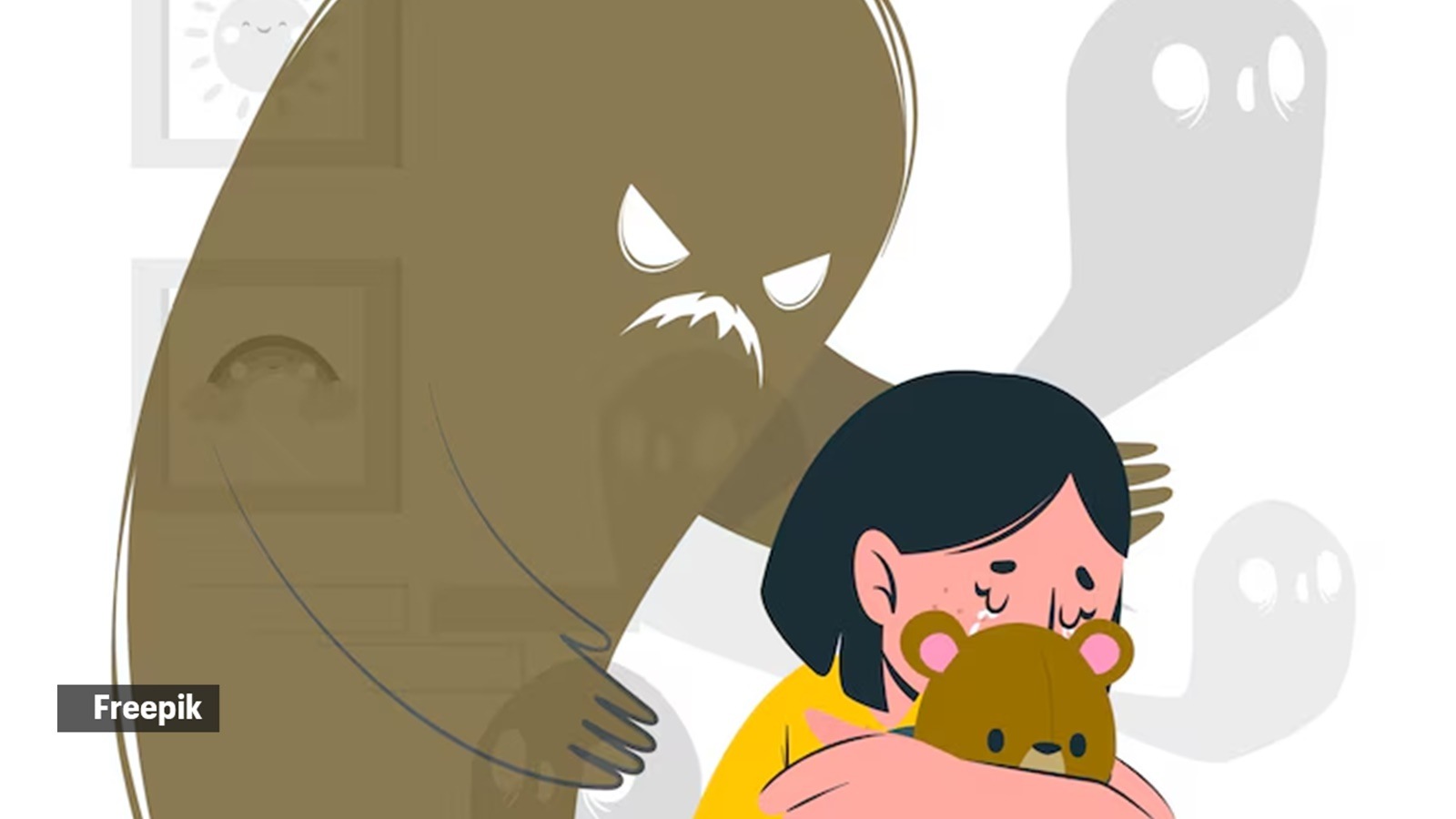A closer look at childhood fears and how to overcome them
4/12/2024 - Updated 1:04:17 pm
Courtesy: The Indian Express
Fear is a healthy, inborn instinct essential for survival of mankind, triggering the fight-or-flight response in dangerous situations.

From shutting your eyes atop a Ferris wheel to clinging to someone in the dark or panicking at the sight of clowns, childhood fears often follow people into adulthood. Recently, Bollywood veteran Manisha Koirala shared her experience of confronting her childhood fear of cycling. In an Instagram post, she recounted how her friend Sarosh Pradhan helped her conquer this fear after years of avoidance. "I finally conquered my fear of cycling in traffic today! After 2 years off the saddle, I was nervous, but a good friend Sarosh Pradhan nudged me and kept insisting I need to overcome fear," Koirala wrote in her Instagram caption. Psychologist Ashutosh Tiwari from MindGlass Well-Being Private Limited said fear is a healthy, inborn instinct essential for survival of mankind, triggering the fight-or-flight response in dangerous situations. According to him, cycling-related fears were common among 90s kids. “In those days, children learned to balance bicycles through trial and error, often witnessing injuries in the process. This contributed to the anxiety around cycling,” Tiwari said. View this post on Instagram A post shared by Manisha Koirala (@m_koirala) What causes childhood fears? Psychologist Komel Chadha said that when a child feels insecure, it can overshadow their need for affection. “Anything perceived as different or capable of disrupting their sense of security can trigger fear,” she explained. According to her, since children’s cognitive faculties are still developing, it makes them more prone to misinterpret situations and focus on negatives. Dr Rahul Chandok, senior consultant and head of psychiatry at Artemis Lite NFC, New Delhi, said that childhood fears can stem from a variety of sources including developmental milestones, temperament, traumatic experiences or modeling others. "As children grow, they encounter new experiences and concepts that can be overwhelming or frightening. For example, the fear of the dark is often linked to a child's developing imagination and the inability to distinguish between fantasy and reality. Some children are naturally more anxious or cautious than others. This can make them more prone to developing fears," he said. Dr Ambarish Ghosh, consultant psychiatrist at CMRI, said that trauma—such as abuse, neglect, bullying, or parental separation—can leave lasting emotional scars, creating fears that persist into adulthood. "Manipulative or overly strict parenting can also instill irrational fears and trust issues in children," he said. How are they different from irrational fears, phobias, and perceived fears? Jasmine Arora, clinical psychologist consultant at Artemis Hospitals, explained the key distinctions between childhood fears, irrational fears, phobias, and perceived fears: Childhood fears: These are often temporary and related to normal developmental processes. They may not meet the diagnostic criteria for a phobia. Irrational fears: These are fears that are d
isproportionate to the actual threat posed by a situation or object. They may be based on unrealistic beliefs or distorted thinking patterns. Phobias: These are persistent, excessive, and unreasonable fears of specific objects or situations. They significantly interfere with daily life and can cause significant distress. Perceived fears: These are fears that are based on a person's subjective interpretation of a situation. They may not be objectively justified but still cause significant anxiety. What are some effective ways for people to overcome their childhood fears? Dr Chandok said that it is possible to treat childhood fears in adulthood. Cognitive-behavioural therapy (CBT) is a common approach that helps individuals identify and challenge negative thoughts and behaviours associated with their fears. Exposure therapy, another effective technique, involves gradually exposing individuals to the feared stimulus in a controlled setting. "In some cases, medication may be used in conjunction with therapy to manage anxiety and fear symptoms. However, medication is typically not a standalone treatment and should be used under the guidance of a mental health professional," he said. Dr Ghosh said that these fears, if not addressed during childhood, can resurface in adulthood due to psychological regression, where unresolved emotions from early years return. Therapies such as psychotherapy and regression therapy allow individuals to revisit and process their childhood experiences, identifying the root causes of their fears. Psychotherapy provides tools to reframe traumatic memories, while regression therapy guides individuals to confront and release their pain. He also said that overcoming childhood fears requires a combination of parental involvement during childhood and therapeutic intervention if these fears persist into adulthood. Parents and caregivers play a pivotal role in helping children navigate their fears. It is essential for parents to provide consistent emotional support and observe changes in their child’s behavior. "Signs such as a fear of specific individuals, avoidance behaviours, difficulty concentrating, or social withdrawal may indicate underlying fears or phobias. Open communication and reassurance can help children feel safe, while professional counselling sessions can address the root causes of their fears," he said. Dr Chandok stressed the importance of acknowledging your child’s fears and providing support. Gradual, controlled exposure to the feared situation, coupled with positive reinforcement, can build confidence and reduce anxiety. Modeling healthy ways of coping with fears also teaches children resilience. Arora recommended building a strong support system and adopting coping mechanisms to manage lingering fears. With the right therapeutic approaches, adults can overcome anxiety, panic attacks, and nightmares linked to childhood fears, achieving better mental health and emotional resilience.